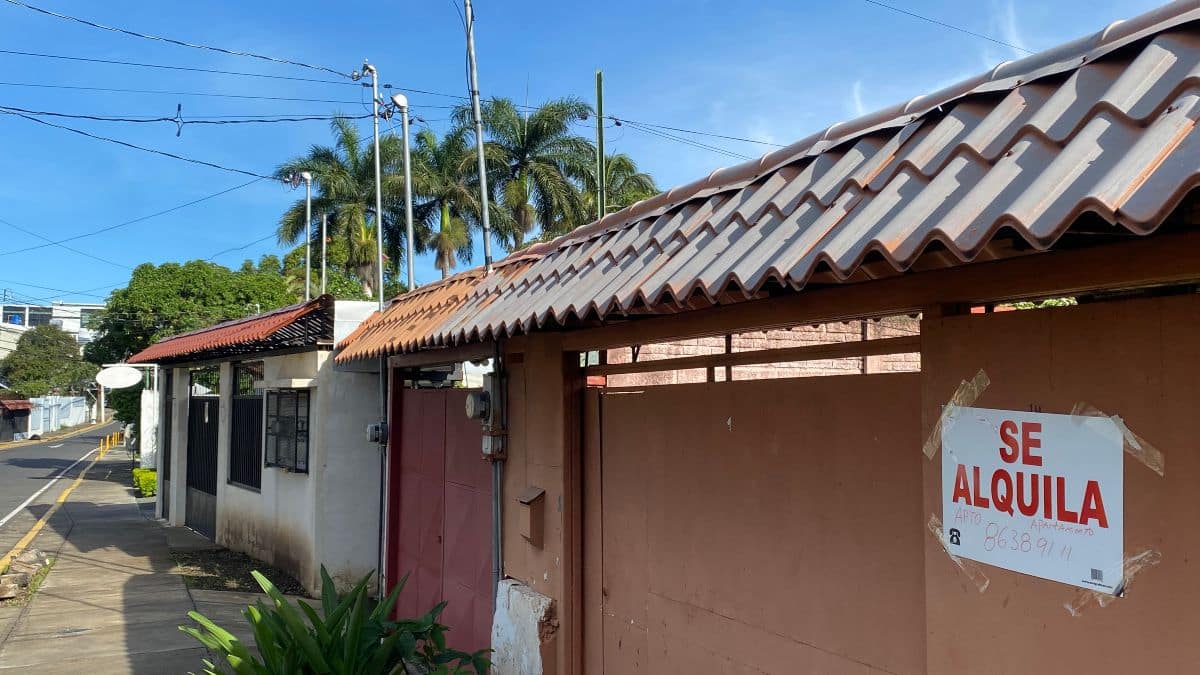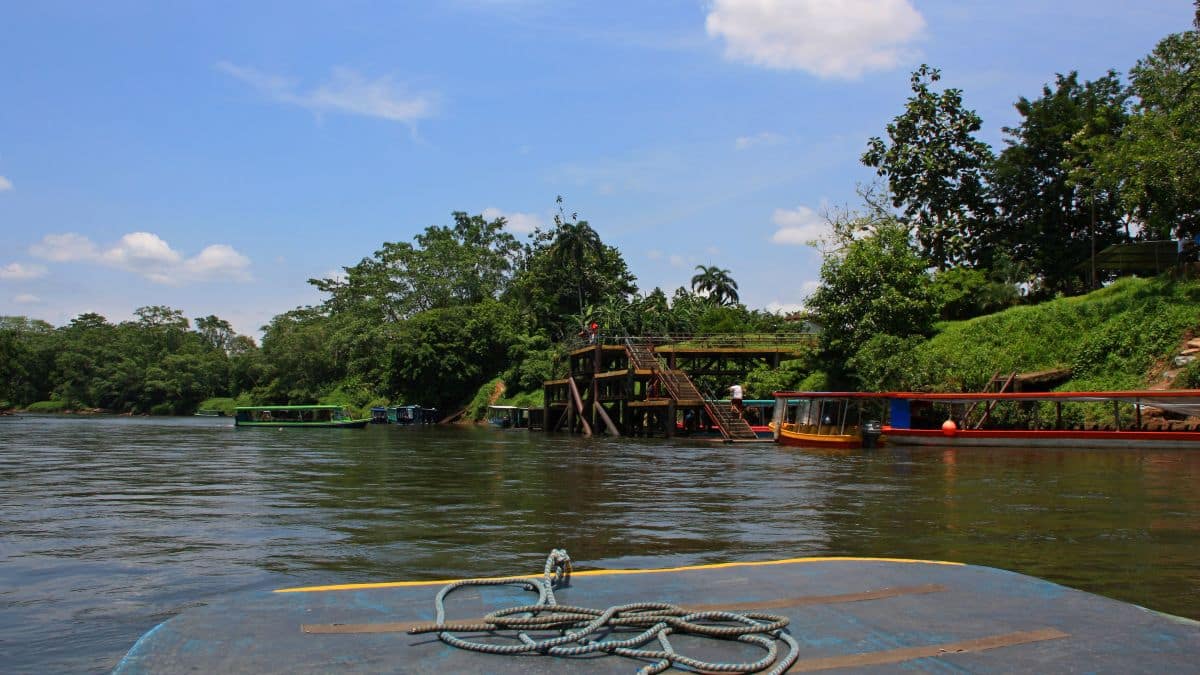As the Costa Rica president walks back his IMF proposal, experts weigh in with their alternatives.
On Sunday evening, President Carlos Alvarado took his tax-raising proposal to the IMF off the table. It was a non-starter, with zero chance of passing through the Legislative Assembly. On top of that, it led to protests, blockades, and civil unrest throughout Costa Rica.
In his statement on Sunday, the president called for a national dialogue to find the best possible proposal to take to the IMF to receive that $1.75 billion loan.
Earlier this week, CRHoy highlighted alternate IMF proposals and ideas by Costa Rican economists, politicians, and analysts.
Sí hay alternativas: Las otras propuestas para negociar con el FMI – https://t.co/69CrQyrV6o
— CRHoy.com (@crhoycom) October 6, 2020
The most similar proposal to the governments came last week, before the withdrawal.
Written by a team of economists from the Universidad Nacional (UNA), it includes amended parts of the original proposal. But it also places far more emphasis on economic reactivation and restructuring, something Alvarado’s plan barely mentioned.
UNA economist Olman Segura says the proposal should also include moratorium on interest payments of the public debt for 36 months, plus a restructuring of public debt.
There should be a commitment to crack down on existing tax evasion/avoidance. In 2018, VAT evasion totaled some 650 billion colones (just over $1 billion).
Some of the UNA proposals were similar to the original proposal. They suggested keeping the bank transaction tax. Their version though, suggests only taxing transactions greater that 1,000,000 colones (approx. $1,600). The tax rate of 0.03% for two years followed by 0.02% for two years remains unchanged.
They also suggested taxing inheritances exceeding 100 million colones ($166,000) by 10%. Another proposed UNA tax would hit drinkers. Beer would be taxed 0.25 colones per mililiter while other alcoholic beverages would get a 0.3 colones tax per mililiter.
The UNA would also eliminate tax exemptions and include a one-time contribution from companies operating out of free zones.
You can read more about the UNA’s alternate IMF proposal in this CRHoy piece from September 29 (in Spanish).
Nuevos impuestos: La propuesta de la UNA para negociar con el FMI – https://t.co/RKowfJLYEH
— CRHoy.com (@crhoycom) September 29, 2020
Other proposals double down far more on government reform and spending cuts, dropping the emphasis on taxes.
Economist Eli Feinzaig, founder of the Partido Liberal Progesista, says the IMF proposal should be 80% structural reform and cost cutting. That’s opposed to the government proposal, which was 80% taxes.
He believes in selling off state assets so the government can pay off its public debt.
Feinzaig would also simplify taxes in Costa Rica, by eliminating most of them. Most taxes don’t get collected anyway. The bulk of tax revenue comes from three sources – VAT, income tax, and fuel tax. Why not get rid of the rest?
“Lowering taxes and making them more broad-based will help reactivate the economy,” says Feinzaig. A reactivated economy means more tax payers which means more taxes, even if at a lower rate.
#TiempoDeValientes#NoMás pic.twitter.com/NzJV3ASnVH
— Liberal Progresista (@liberalcr) September 21, 2020
Feinzaig isn’t the only person looking at tax cuts and economic reactivation.
Pedro Muñoz, a PUSC diputado, has a similar way of thinking. His plan for the IMF is as follows:
1. Cut superfluous government expenses (advertising, travel, etc.)
2. Renegotiate the interest rate of internal debt. This is 77% of total government debt, owned by public institutions.
3. Encourage economic reactivation by supporting entrepreneurs and independent workers.
4. Explore new markets for Costa Rican exports.
Lower social charges that companies and workers must pay.
A profound reform to public employment.
5. Incentivize and encourage tourism with tax and non-tax benefits.
6. Review the methodologies of how companies set their rates and lower the cost of public services.
La falta de acción del Gobierno es cobarde e irresponsable. Como oposicion hemos presentado un plan de reactivación a un Gobierno sordo y obtuso. ¡NO a la violencia en las calles! Urge un #GranAcuerdoNacional para frenar el #DesgobiernoPAC pic.twitter.com/F6FzdqTr88
— Pedro Muñoz (@PedroMunoz_cr) October 4, 2020
Public policy expert Juan Carlos Hidalgo says the government’s original proposal was unrealistic from the start.
Any plan to recuperate 5% of GDP in a year, especially through taxes, would never work. Especially during the worst Costa Rican economy in 40 years.
“No previous fiscal plan has managed to collect more than 1.5% of GDP in one year. So what the government suggested was simply delusional,” he says.
That said, Hidalgo is not against the concept of a loan from the IMF. He believes such an agreement would make the structural changes the country so badly needs easier to implement.
But Costa Rica needs to convince the IMF to lend the money by cutting and controlling spending, and taking the steps needed to reactivate the economy and making the country more competitive and business-friendly. Not by raising taxes.
The only tax raise Hidalgo sees as viable is to increase VAT by 2% (from 13% to 15%).
Fue un gusto estar hoy en “Estado Nacional”. Necesitamos una propuesta de ajuste fiscal apegada a la evidencia y eso nos indica que la ruta debe ser el recorte del gasto, la reestructuración de la deuda interna y l reactivación económica. pic.twitter.com/JyLboFoPwR
— Juan Carlos Hidalgo (@jchidalgo) September 27, 2020
Like the other proposals, Hidalgo believes in restructuring Costa Rica’s internal debt and structural reform of the public sector.
A report yesterday said that Costa Rica spends 39% of its money on public sector salaries and 42.7% on additional bonuses/incentives. That’s more than on actual salaries, and together comes to a massive 81.7%. Unsustainable.
This is why Hidalgo and others are calling for public employment reform and for the government to include it in any IMF proposal.
Gobierno gastará ¢1,2 billones en pluses para sus empleados – https://t.co/dSgx9xagpB
— CRHoy.com (@crhoycom) October 7, 2020
Linked to public employment is Hidalgo’s call to not pay Salarios Escolares in January.
This is a quirk of Costa Rican employment law where a public employee’s annual salary increase accumulates and gets paid in bulk each January.
The 2018 Strengthening of Public Finances Law mandates that if debt exceeds 60% of GDP, as it already has, then public employees don’t receive these increases.
Following this mandate and not paying the salario escolar would save up to 0.8% of GDP if applied across Costa Rica’s public sector.
Other measures Hidalgo says the government should include in its next proposal would be to unify all public purchases in SICOP, something it should be doing anyway.
SICOP (Sistema Integrado de Compras Públicas) is the system implemented in 2015 to provide transparency with Costa Rica’s various procurement systems. The Ministry of Fiance says that proper use of SICOP would save 1% of GDP.
Hidalgo’s also calling for a reform in public pensions. State pensions should not exceed 1.6 million colones (approx. $2,600) per month. Many of them are far more than that.
Según el Banco Mundial, un sistema único de compras públicas podría ahorrar un 0,8% del PIB. Si a eso le agregamos la eliminación del salario escolar (aproximadamente 0,4% del PIB para GC), tenemos más de 1% del PIB en recorte de gasto sin despedir un solo funcionario público. https://t.co/QarEgcouWt
— Juan Carlos Hidalgo (@jchidalgo) September 23, 2020
Like the UNA, Pedro Muñoz, and Eli Feinzaig, Hidalgo believes reactivating the economy is key.
“When the economy is growing, it is thriving, generating fresh resources. This is why we must bet on a fiscal adjustment that doesn’t torpedo the economy, like increasing taxes,” he says.
A final suggestion by Hidalgo would be to lower the corporate tax rate in Costa Rica from the current 30% to 25%. That’s in line with the thinking of Rodrigo Chaves, President Alvarado’s former finance minister.
The original IMF proposal would have raised this tax to 36%, instead. Another reason why Alvarado’s plan was a non-starter for so many sectors.
URGE RECORTAR GASTO, REDUCIR TAMAÑO Y SERVICIO DE LA DEUDA, EXPLOTAR RECURSOS NATURALES, REACTIVAR LA ECONOMÍA Y VENDER ACTIVOS #nomasimpuestos pic.twitter.com/HlkknYnl3H
— Otto Guevara Guth (@OttoGuevaraG) October 5, 2020
The coming days are crucial for Costa Rica as President Alvarado seeks to cobble together a new IMF proposal.
The problem is, it’s impossible. There’s no way out of this without the serious structural reforms talked about by the experts quoted above.
And many of these reforms will only keep the protesters protesting and the blockades up. Everyone agreed about #NoMasImpuestas. Now, we’ll see growing divide between public and private sector in Costa Rica become a chasm. Many protesters will not stand for the measures discussed in this article.
Costa Rica is in crisis. The economy is wrecked, unemployment is higher than its ever been, and for all intents and purposes, it’s already fallen off the fiscal cliff. Do we have a parachute at all or will we plummet like an egg and splatter at the bottom?
Does the president have the stomach to do what needs to be done? Will the legislature, private sector, and public sector come together for the good of the country? It doesn’t look hopeful.
This article was adapted from the original in Spanish by Gerardo Ruiz in CRHoy on Tuesday, October 6, 2020.
James Dyde is the editor of www.centralamerica.com. He lives in Escazu, Costa Rica.




